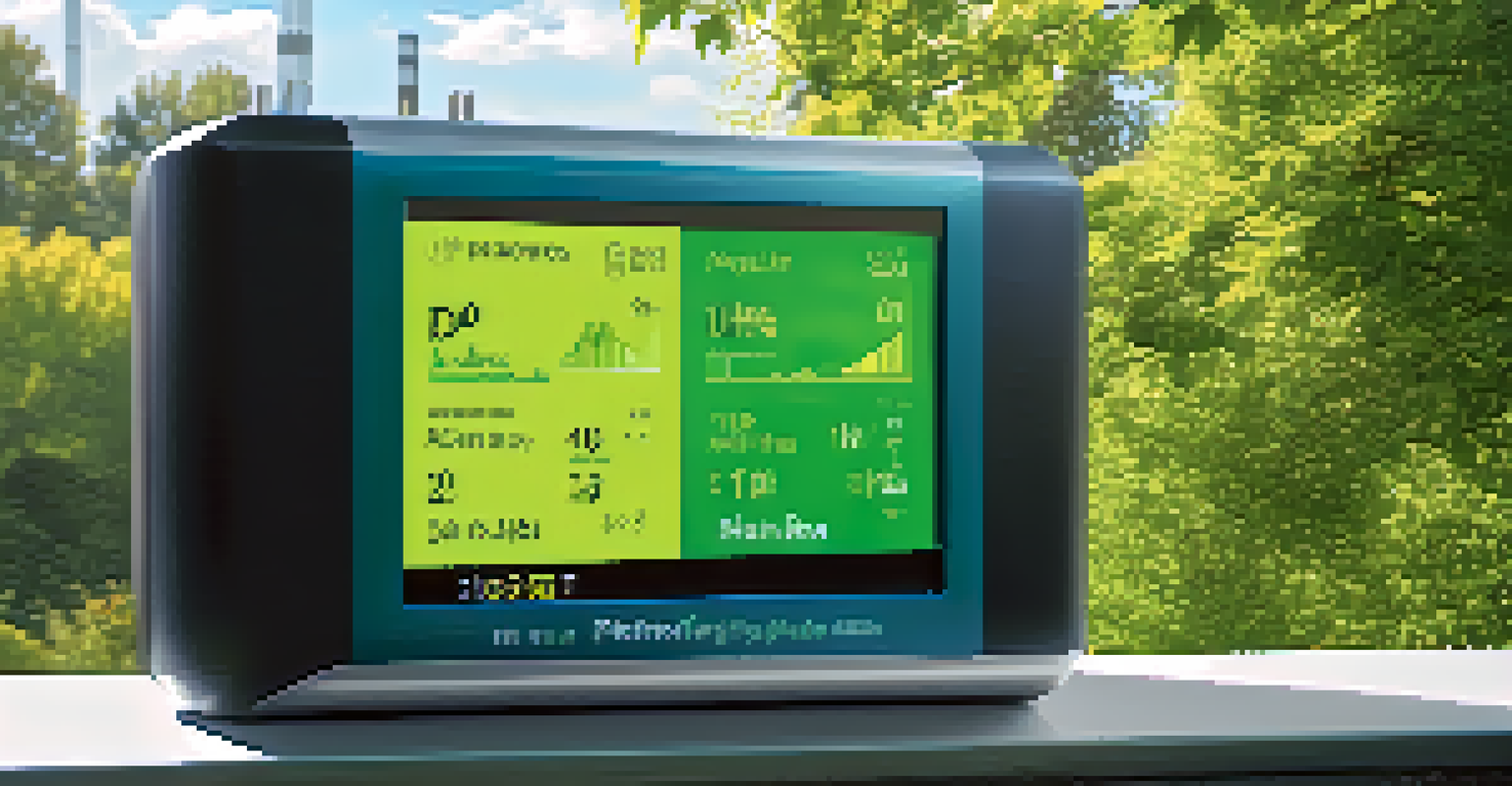Air Quality in San Diego: Challenges and Community Solutions

Understanding Air Quality Issues in San Diego
San Diego, with its beautiful beaches and sunny weather, faces significant air quality challenges. Factors like vehicle emissions, industrial activities, and wildfires contribute to pollution levels that can affect health and the environment. Despite its coastal location, the city struggles with smog and particulate matter, particularly during certain seasons. Understanding these challenges is the first step toward finding effective solutions.
The greatest threat to our planet is the belief that someone else will save it.
The region often experiences high ozone levels, especially during summer months when temperatures rise. This can lead to respiratory problems, particularly for vulnerable populations like children and the elderly. Furthermore, the proximity to the U.S.-Mexico border adds complexities, as air quality regulations can differ across jurisdictions. Recognizing these local and regional influences is crucial for addressing air quality effectively.
Community awareness and involvement play a vital role in tackling air quality issues. By understanding the sources and impacts of pollution, residents can advocate for healthier environments. Local initiatives and educational programs aim to equip citizens with the knowledge needed to make informed choices and promote cleaner air.
The Impact of Wildfires on Air Quality
Wildfires are a significant concern for air quality in San Diego, particularly during dry seasons. These fires release large amounts of smoke and particulate matter into the air, leading to poor air quality that can linger for days or even weeks. The impact is not just local; smoke can travel long distances, affecting air quality in neighboring regions as well.

Residents often experience health issues during wildfire events, including respiratory distress and exacerbated conditions like asthma. The ash and debris from wildfires can settle in homes and public spaces, creating additional health hazards. Understanding how wildfires contribute to air pollution is essential for developing effective prevention and response strategies.
Wildfires Affect Air Quality
Wildfires release smoke and pollutants that can severely impact air quality, leading to health issues for residents.
Community efforts to mitigate wildfire risks include creating defensible spaces around homes and participating in local fire prevention programs. Additionally, educating the public about evacuation routes and emergency plans can help residents respond more effectively during wildfire incidents. These proactive measures contribute to protecting both public health and air quality.
Transportation's Role in Air Quality
Transportation is a major contributor to air pollution in San Diego, with cars and trucks emitting harmful pollutants. The city's growing population and traffic congestion exacerbate this problem, leading to increased greenhouse gas emissions and poor air quality. Addressing transportation-related emissions is critical for improving air quality and ensuring a healthier environment for residents.
Air pollution is not just an environmental issue; it is a human rights issue that affects us all.
Encouraging the use of public transportation, biking, and walking can significantly reduce vehicle emissions. San Diego has made strides in expanding its public transit system, but more work is needed to make it a viable option for everyone. Additionally, promoting electric vehicles and providing charging infrastructure can help decrease reliance on fossil fuels.
Community programs aimed at encouraging sustainable transportation options are gaining traction. Initiatives that promote carpooling, biking events, and walking groups not only reduce emissions but also foster a sense of community. By collectively working towards greener transportation, San Diegans can contribute to better air quality and a healthier city.
Industrial Pollution and Its Effects
Industrial activities in and around San Diego can significantly impact air quality. Factories and power plants often release pollutants that contribute to smog and respiratory issues. Understanding the types of emissions produced by local industries is essential for developing targeted regulations and solutions.
Regulatory measures are in place to limit industrial emissions, but enforcement and compliance remain challenges. Community groups often advocate for stricter regulations and transparency from local industries regarding their emissions. By holding companies accountable, residents can push for cleaner air and a healthier environment.
Transportation Pollutes Our Air
Vehicle emissions from transportation contribute significantly to air pollution in San Diego, necessitating a shift towards sustainable practices.
Many industries are beginning to adopt greener technologies and practices to reduce their environmental footprint. This shift not only benefits air quality but can also enhance public perception and community relations. Supporting local businesses that prioritize sustainability helps to create a healthier and more responsible industrial sector.
Community Initiatives for Cleaner Air
San Diego residents are actively participating in initiatives aimed at improving air quality. From neighborhood clean-up events to tree-planting campaigns, community involvement is crucial for fostering a cleaner environment. These grassroots efforts not only enhance local air quality but also build community spirit and awareness.
Local organizations and non-profits often lead the charge in educating residents about air quality issues. Workshops, seminars, and informational campaigns help residents understand how they can contribute to cleaner air through simple lifestyle changes. Empowering citizens with knowledge is a powerful tool in the fight against air pollution.
Collaboration between community members, local government, and organizations can amplify the impact of these initiatives. Through partnerships, resources can be pooled, and broader outreach can be achieved, creating a more significant change. Working together, San Diegans can make strides towards achieving cleaner air for future generations.
The Role of Technology in Monitoring Air Quality
Technology plays a pivotal role in monitoring and improving air quality in San Diego. Advanced sensors and monitoring systems provide real-time data on pollution levels, enabling residents and officials to make informed decisions. This data can help identify pollution hotspots and track changes over time, leading to more effective interventions.
Mobile apps and online platforms have emerged, allowing residents to check air quality in their area before going outside. These tools empower individuals to take charge of their health by avoiding outdoor activities during poor air quality days. Increased accessibility to air quality data fosters a more informed community.
Community Involvement is Key
Local initiatives and community engagement play a crucial role in improving air quality and fostering a healthier environment.
As technology continues to evolve, innovative solutions for improving air quality are on the horizon. From air purification technologies to sustainable urban planning tools, the potential for technological advancements is vast. By embracing these innovations, San Diego can pave the way for a healthier and more sustainable future.
Future Directions for San Diego's Air Quality Efforts
Looking ahead, San Diego faces both challenges and opportunities in its pursuit of better air quality. Continued collaboration among community members, local government, and industries is essential for addressing pollution effectively. Setting ambitious goals for reducing emissions and enhancing public health will require collective action and commitment.
Investing in sustainable infrastructure, such as green spaces and public transportation, can significantly improve air quality in urban areas. Additionally, promoting clean energy alternatives will help reduce reliance on fossil fuels. The city's commitment to sustainability will play a vital role in shaping its air quality future.

Community engagement will remain a cornerstone of San Diego's air quality efforts. By fostering a culture of awareness and responsibility, residents can continue to advocate for cleaner air. Together, San Diegans can strive towards a healthier, more vibrant city for everyone.